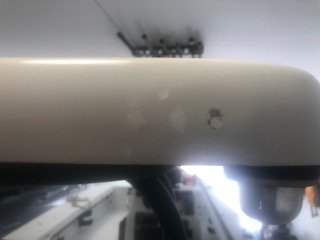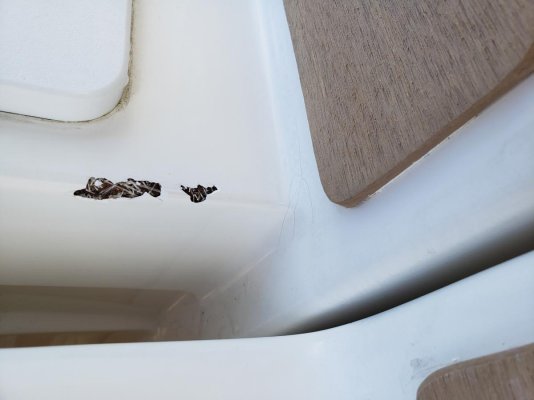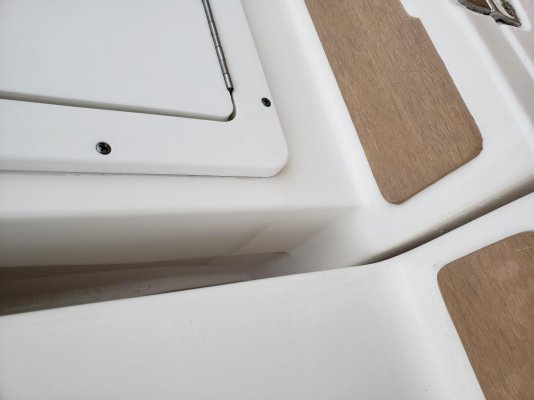Dougcole
Guru
So lately I Have been trying to teach myself the dark art of gel coat repair. I'm not planning on big projects, but I would like to be able to do small ones, like screw holes and small gouges myself. I'm getting better at, but I'm still inconsistent and have a way to go.
My repairs look better than a screw hole anyway. Or that's what I keep telling myself, LOL.
Below is an example of one of my worst attempts. Obviously, I am off on the color (needs a tiny drip of black mixed in, I think) but the biggest problem is the spot on the top right. I keep getting this problem where the edges of a chip or hole don't fill in smooth and after sanding you can see the outline of the hole, even with a perfect color match.
I have been using a chamfer bit to drill out the hole prior to putting in the gel coat. Do I need to drill it out more maybe?
Thanks in advance.
Doug
My repairs look better than a screw hole anyway. Or that's what I keep telling myself, LOL.
Below is an example of one of my worst attempts. Obviously, I am off on the color (needs a tiny drip of black mixed in, I think) but the biggest problem is the spot on the top right. I keep getting this problem where the edges of a chip or hole don't fill in smooth and after sanding you can see the outline of the hole, even with a perfect color match.
I have been using a chamfer bit to drill out the hole prior to putting in the gel coat. Do I need to drill it out more maybe?
Thanks in advance.
Doug



